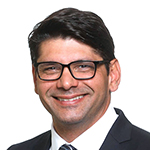Active vs passive: which offers the best value for money?

|
Written By: Emma Powell |
Emma Powell looks at some of the factors to be conisdered when choosing between active and passive approaches to fund management
Passive investment products are biting at the heels of active strategies. A lower cost of fees and scepticism towards the level of outperformance that can be achieved through manager skill has driven investors increasingly towards passive investments.
Last year, global passive equity funds gained $366 billion in net inflows, according to data from Morningstar, compared with $357 billion in flows lost by their active counterparts. Meanwhile in the UK, equity and fixed income funds from passive investment titans BlackRock and Vanguard were two of the top three best-selling last year, according to the same data provider, while Invesco, Aberdeen Asset Management and M&G suffered the heaviest outflows.
While fixed-income is the one area where active funds still reign – they collected $625 billion last year, according to Morningstar, just shy of 2012’s record $635 billion – passive fixed-income flows surged to their own record $383 billion, higher than the previous annual record of $278 billion for passive fixed income in 2017.
Exchange-traded funds (ETFs), which reached $6 trillion in assets under management by the end of last year, have helped buoy the rise in passive investment. That rise has been led by inflows into equity ETFs, but ETFs are also gaining ground within the fixed income market, with assets in passive bond ETFs hitting $1 trillion for the first time in 2019, according to ETFGI. ETFs are created by exchanging a basket of bonds or equities with an ETF provider for a set number of ETF shares that can be traded like a single stock.
The threat of passive strategies has driven increased consolidation within the active management industry in the hope of benefiting from greater cost efficiencies and breadth in their exposure to different asset classes and geographies. In February, US asset manager Franklin Templeton agreed the acquisition of rival Legg Mason for $6.5 billion including debt, creating a group with more than $1.5 trillion in assets under management.
Management at Franklin Templeton said the deal would broaden its product offering and allow it to expand into new asset classes such as infrastructure, real estate and quantitative multi-asset strategies. The group recorded heavy outflows last year, with the Templeton Global Bond Fund among those suffering the largest losses at $6.3 billion in net redemptions, according to Morningstar.
As the fees attached to passive investment strategies are a fraction of those charged by active managers, some active managers have taken measures to make their fee structures more competitive. In 2017, Fidelity International announced that it would be cutting headline fees on some of its UK active funds and introducing a variable management fee linked to fund performance.
A year later Baillie Gifford, the largest active equity manager for the LGPS, also reduced the fees for the opening tier of assets from 0.95% to 0.75%. The changes meant the first £50 million of net assets would incur a charge of 0.75%; on the next £200 million of net assets the charge is 0.65% and 0.55% on assets beyond £250 million.
Yet do lower fees necessarily equate to value for money? Indeed, despite the rapid inflows into passive strategies, 63% of pension fund assets were still managed on an active basis in 2018, according to the Investment Association.
Within the fixed income market, active management can be better suited to certain asset classes. Passive management tends to be more prevalent for allocations to government bonds, according to Barnett Waddingham senior investment consultant Pete Smith.
“When you look at the corporate bond or credit markets then the opposite is the case,” said Smith. “It’s largely because the way that the indices are set up. The more indebted a company is, the bigger position they make up in the index.” That may not fit with a pension fund’s risk appetite, he added.
Value for money?
However, active managers’ performance against their equivalent indices and against their respective benchmarks has been patchy in recent years. Last year 71% of active European equity funds denominated in euros underperformed the S&P Europe 350, according to S&P Indices Versus Active scorecard, and on an asset-weighted basis, the benchmark outperformed funds in this category by 1.5%.
For local authority schemes specifically, passive funds tracking global indices performed best last year for local authority pension schemes, according to the Pension and Investments Research Consultants.
However, Baillie Gifford director, Piers Lowson, points to research conducted by Arizona State University, which suggests a minority of public companies are responsible for the majority of returns. Between 1990 and 2018, just 1.3% of companies were responsible for the $44.7 trillion total net wealth generated by publicly-listed firms globally, according to the research. What’s more, a further 37.8% of companies had a positive lifetime wealth generation, which was destroyed by the majority (60.9%) of firms that generated negative wealth.
“Where we see the growth coming from over the next decade or so is in the disruptors,” said Lowson. “If you’re investing in everything, it’s going to be particularly hard to have any exposure in these successful companies.”
But how does a scheme judge whether to switch an active asset manager? One factor to consider is whether the manager is still managing the portfolio on the basis they were originally appointed, said Ajeet Manjrekar, co-head of investment consulting and fiduciary management specialist at River and Mercantile Solutions. “Or if there has a fundamental change in what they’re doing or how they manage the portfolio, or a personnel change,” he said.
However, in the wake of the widespread sell-off in global equities, will active managers be better-placed to navigate choppy markets and limit losses? Judging by early evidence of the performance of mutual funds, perhaps. Between 20 February and mid-March, 91% of active European equity funds beat market declines, according to analysis by FE Fund Info.
In March, the FTSE 100 recorded its worst daily sell-off on record as the Covid-19 outbreak worsened. Index trackers have also been hurt by their exposure to oil and gas stocks, which plummeted due to the oil price war that erupted between Saudi Arabia and Russia.
“If you’re a long-term investor you have to avoid the temptation of doing anything immediately,” said Lowson. “However, the threat of an economic downturn could result in a flight by active managers to quality companies over value stocks,” he added.
Passive investment strategies can also allow investors to capture beta and benefit from an eventual correction, said Manjrekar. “If markets correct and trustees don’t have the governance appetite to monitor active management [they could] just invest passively,” he said.
Yet returns are not the only factor pension funds must consider when making the choice between active and passive strategies. The growing incorporation of environmental, social and governance issues within pension funds investment strategies adds another layer to the decision-making process.
In March the Department of Work and Pensions revealed that schemes would be required to report on the potential impact of climate change and the low carbon transition on their assets and investment strategy, in line with the Taskforce on Climate-related Financial Disclosures, under an amendment to the pensions bill.
Active management has traditionally been the preference among investors seeking to integrate ESG principles into their strategies, but a greater number of passive ESG products are now coming to market.
In January, passive titan BlackRock unveiled plans to double the number of sustainability-focused ETFs it offers to 150, as part of efforts to increase sustainable assets ten times over to around $1 trillion in a decade.
Investors seeking to invest passively can either buy a product that tracks an index that is specifically designed around ESG criteria, or ask a passive manager to integrate ESG screens into a standard index.
However, engagement is critical to being a responsible asset owner, Lowson argued, and investing in fewer holdings allows active managers to engage more effectively with the boards of those companies.
Given the cost benefits and failure of active strategies to consistently outperform, the lure of passive strategies will likely continue for investors. That is not to say that active asset management does not have a place, particularly with regards to some fixed income and alternative strategies, but investors will be casting an ever more critical eye over the fees they are asked to pay.
More Related Content...
|
|
|



